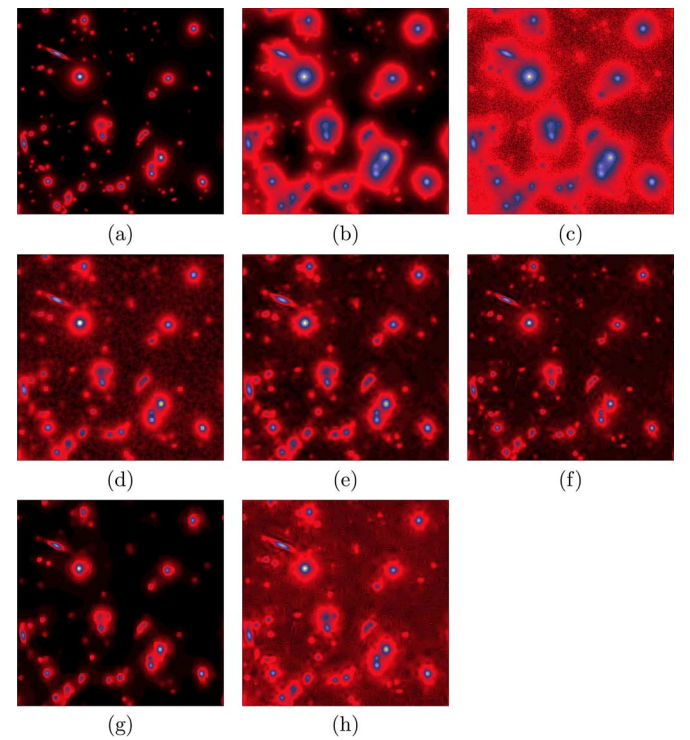Abstract
In this paper, we propose a fast image deconvolution algorithm that combines adaptive block thresholding and Vaguelet-Wavelet Decomposition. The approach consists in first denoising the observed image using a wavelet-domain Stein block thresholding, and then inverting the convolution operator in the Fourier domain. Our main theoretical result investigates the minimax rates over Besov smoothness spaces, and shows that our block estimator can achieve the optimal minimax rate, or is at least nearly-minimax in the least favorable situation. The resulting algorithm is simple to implement and fast. Its computational complexity is dominated by that of the FFT. We report a simulation study to support our theoretical findings. The practical performance of our block vaguelet-wavelet deconvolution compares very favorably to existing competitors on a large set of test images.

